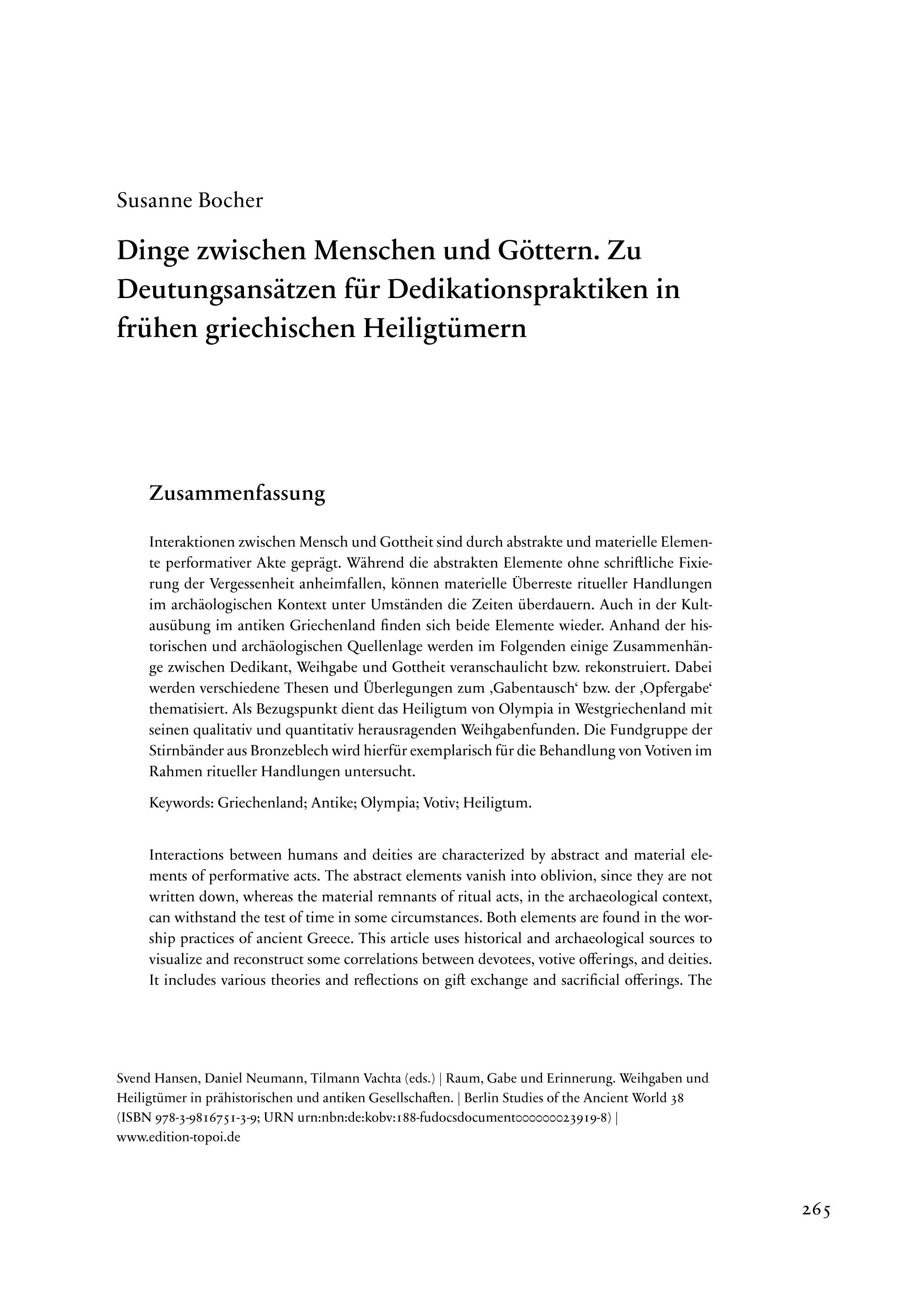Dinge zwischen Menschen und Göttern. Zu Deutungsansätzen für Dedikationspraktiken in frühen griechischen Heiligtümern
Interactions between humans and deities are characterized by abstract and material elements of performative acts. The abstract elements vanish into oblivion, since they are not written down, whereas the material remnants of ritual acts, in the archaeological context, can withstand the test of time in some circumstances. Both elements are found in the worship practices of ancient Greece. This article uses historical and archaeological sources to visualize and reconstruct some correlations between devotees, votive offerings, and deities. It includes various theories and reflections on gift exchange and sacrificial offerings. The sanctuary of Olympia in western Greece, with its qualitatively and quantitatively outstanding votive finds, serves as a point of reference. The find group of sheet-bronze headbands is examined as an example for the treatment of votives in ritual acts.
Interaktionen zwischen Mensch und Gottheit sind durch abstrakte und materielle Elemente performativer Akte geprägt. Während die abstrakten Elemente ohne schriftliche Fixierung der Vergessenheit anheimfallen, können materielle Überreste ritueller Handlungen im archäologischen Kontext unter Umständen die Zeiten überdauern. Auch in der Kultausübung im antiken Griechenland finden sich beide Elemente wieder. Anhand der historischen und archäologischen Quellenlage werden im Folgenden einige Zusammenhänge zwischen Dedikant, Weihgabe und Gottheit veranschaulicht bzw. rekonstruiert. Dabei werden verschiedene Thesen und Überlegungen zum ‚Gabentausch‘ bzw. der ‚Opfergabe‘ thematisiert. Als Bezugspunkt dient das Heiligtum von Olympia in Westgriechenland mit seinen qualitativ und quantitativ herausragenden Weihgabenfunden. Die Fundgruppe der Stirnbänder aus Bronzeblech wird hierfür exemplarisch für die Behandlung von Votiven im Rahmen ritueller Handlungen untersucht.

